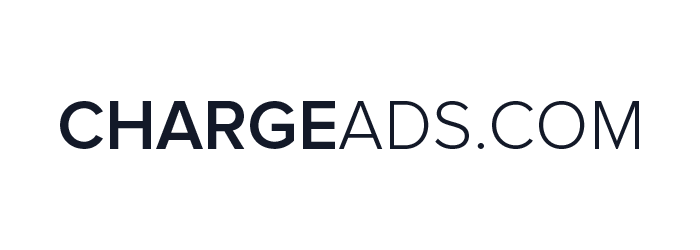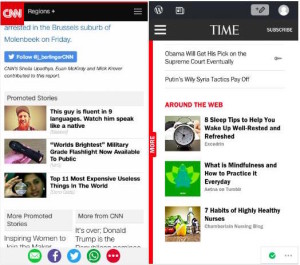Help Get Publishers Off the Kool-Aid: Q&A with Mihai Fanache, CEO, ChargeAds.com
by Lindsay Rowntree on 2nd May 2016 in News

Content recommendations across the web suffer from a bad reputation. A quick glance across popular publisher sites sees users bombarded with content recommendations ranging from 'Shopping Tricks That Retailers Don't Want You to Find Out About' to '50 Celebrities with Plastic Surgery Gone Wrong'. How can publishers regain control of the content recommendations that appear on their web properties? ExchangeWire speak with Mihai Fanache (pictured below), founder and CEO, ChargeAds.com, about how we got ourselves into this situation, and their launch of The Newsroom, a platform to allow publishers to leverage their best content and reduce the quantity of sub-quality content that spans the web.
ExchangeWire: ChargeAds have launched a new platform, The Newsroom, to give publishers more control over native content and monetisation. Talk us through this.
Mihai Fanache: The Newsroom introduces the benefits of data-driven decision making to more areas of publishers’ real estate. We believe it’s time for all page assets to be auctioned consistently – whether we’re looking at headlines, images, content recommendations, native placements or display ads.
So, new stories will not just pile up in a neverending homepage stream. They can start buying their way on the USD$0.05 CPM, below-the-fold inventory, and can eventually become headlines on the USD$10 CPM inventory – if they prove to be top performers. Pricing is clearly internal – but can provide a good view into how good and bad stories are using sites' real estate. So, why not give journalists USD$1,000 worth of platform money every month?
If you look at why publishers are serving their content through Facebook, you find that most of the time they’re missing the technology to make any informed decisions on who should be getting their content and when. And, unfortunately, publishers are giving up most of the revenues, along with their social media posts.
Reality does come together when reading through Facebook’s Q1 earnings and then perhaps this story on the NY Times letting hundreds of people go. Publishers need a new model.
 What are the current challenges for publishers and their native content?
What are the current challenges for publishers and their native content?
I think there are two types of challenges here: understanding native and then integrating these executions with the existing data assets and infrastructure.
While the industry, as a whole, will eventually drive better native executions, things are not likely to get better operationally, as publishers’ tech becomes even more fragmented. It's something worth considering, that’s for sure.
Content marketing and content recommendations have been plagued by quality issues. How did this situation come about?
Bad content marketing will eventually fix itself. Although we’re not all great storytellers, brands will figure out their authentic, consistent voices and the right content with which to surround it. And as soon as agencies no longer feel their media businesses are being threatened, they will help take this to the next level.
Now, content recommendations is a different thing. The promise, eight to nine years ago, was one of a white-gloved butler, presenting you the presidential daily brief. That never really happened. Instead, they welcomed the B, C, and D players out there, running mind-numbing, content arbitrage schemes and the companies running the show have done so on the real estate of the world’s most trusted publishers.
CNN recommending me 'Top 11 Most Expensive Useless Things In The World' is really Idiocracy becoming real.

Unfortunately, for a growing number of publishers, they’re held hostage by bad content recommendations which do pay well, as most recipients of the traffic run their exponential schemes.
We try to help publishers get off the kool-aid, before their credibility runs out.
Consumers crave snackable content; but is their desire for this type of content fuelling the current challenges within content marketing, or is it self-perpetuating?
The unchallenging article formats have long taken over the web – and they’re really the essence of today’s flawed business model used by publishers and supported by the ad tech industry: why build the best of something when you can build the most of something? The more publishers interrupt and distract their users, the more ads they sell or drop into the exchanges and that’s how good impressions blend nicely with cat impressions too.
So, no – I don’t think that the human race is turning into a 'cat-yacht-freakshow, Donald-Trump-craving' bunch of idiots. It’s just that publishers are running a bad business model – and there’s a technology gap we’re looking to fill.
We help publishers reconsider their entire monetisation strategies. Do they need more page impressions or, rather, to get to know their audience better? They meet one user three to ten times a month – while we get 500+ bid requests for the same user. Which model is more scalable? Should they even place ads on their site or, instead, sell their audiences against the billions of impressions flowing into exchanges every minute now? So, we’re bringing those pipes to their sales desks with the DSP built into The Newsroom.
How’s their audience engaging with the 'insurance'- or 'travel'-related content on the site? Would that be a big enough audience segment to build? If the answers is 'yes', they instantly have the reach, frequency, and buying back-office to turn that into a product. So, we turn premium sellers into savvy, professional RTB buyers.
I think that will put an end to the worthless stories and ad impressions out there. So, maybe one day, the staff at Huffington Post will take longer lunch breaks and walks in the park.
How does a private marketplace for content work?
Most publishers seem to have two major challenges in regards to building their audiences: getting new users and guiding them on a content journey. But, unfortunately, with very little data employed, that’s a very bumpy journey, paved with endless distractions. Roadblocks built by journalists competing for attention.
We help publishers onboard their entire content inventory – or content placeholders – and open it up selectively with a combination of deals and second-price auctioning, mostly invisible to the user once set up. Staff writers can buy their way into the homepage feed on a USD$1 CPM floor, and partnering sites can see it at USD$3, with advertisers looking to buy native seeing it at USD$10, for example. So, that goes well beyond content recommendations widgets, as publishers can drive their entire news feed via auctionable placements.
What’s probably more interesting is that we’re not looking to be an artificially-intelligent black-box. As writers push their stories into the platform, they can recommend them specifically to audiences who have previously engaged with content they decide is related – based on internal data or data shared with partnering publishers via The Newsroom. Call it content retargeting – something that’s definitely not new to Facebook.
How would this content trading model impact smaller publishers, which don't necessarily have the same authority when it comes to content seeding?
I think that quality content exchanges can be a great promise for indy or niche publishers. They can surface their best stories to a much wider audience, while we look for truly engaged users – and not the click-bait casualties.
ContentMonetisationNativePublisherSupply Side








Follow ExchangeWire